The First-Generation Buick Riviera: A Premium Personal Luxury Coupe

The 1963-1965 Riviera is a personal luxury two-door coupe manufactured by General Motors under the Buick brand that combined elegance with performance. A flagship model flagship for the Buick brand, the 1963-1965 Riviera was highly regarded among the automotive press of the time and was popular with wealthy buyers.
The premium pricing of the 1963 Riviera is evident compared to other costs of the same period. The base price of $4,330 was over $1,000 more than the average new car. In 1963, The average household annual income was $5,807, and the average home sold for $12,650.
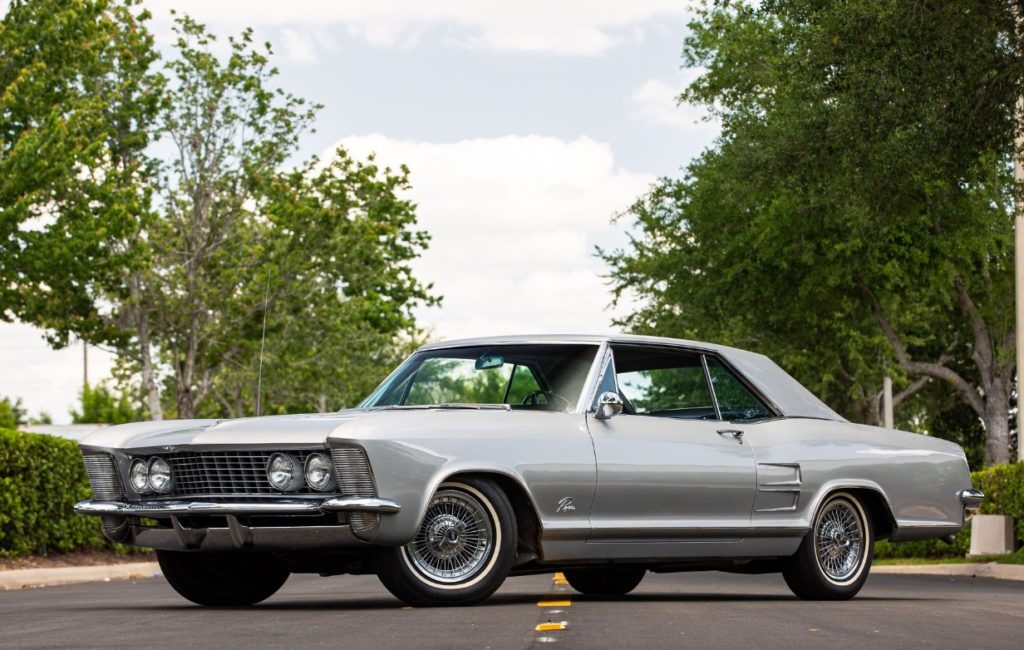
Image credit: orlandoclassiccars.net
Now that we’ve looked at why the model was created, let’s take a few moments to delve into the development, styling, chassis, and suspension of the first-generation Buick Riviera.
Development of the First-Generation Buick Riviera
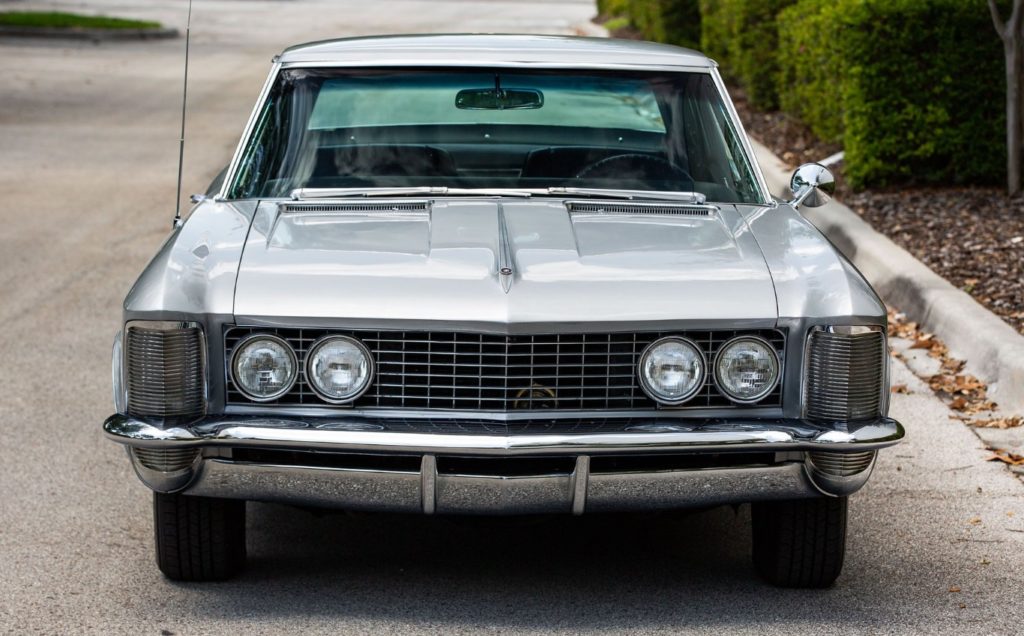
Image credit: orlandoclassiccars.net
In the late 1950s, General Motors tasked its team of designers to create a car to compete with the highly successful Ford Thunderbird.
However, the Riviera didn’t start as a Buick. Instead, it had been conceived as a personal luxury coupe for Cadillac. When Cadillac passed on the design, it was offered to other GM divisions, and Buick jumped at the chance to add the model to its product lineup.
Bill Mitchell, General Motors Vice President, Styling Section, led the designers on the coupe. His inspiration for the Riviera was either Ferrari and Roll Royce or the aircraft design of the F-86 Sabre, which he had seen during his time in the military (or maybe all of the above).
Exterior and Interior Styling

Image credit: orlandoclassiccars.net
Mitchell’s styling of the 1963-1965 Buick Riviera was a departure from the conventional design of cars at the time. The Riviera was a unique design that many would claim was ahead of its time; modern and elegant, with its long, sweeping lines and curved surfaces.
The Riviera featured a bold and aggressive look from the front, while the sides featured the new Coke bottle style and frameless side glass. The rear of the car featured understated taillights and ever-so-slight tail fins. The overall impression was of a luxury coupe that was modern, stylish and aerodynamic.
The interior of the 1963-1965 Buick Riviera was just as sophisticated as its exterior. It featured front bucket seats, a wood-grain dashboard and a center console — with a floor shifter — that ran the length of the cabin. Available options included a tilt steering wheel, power windows, power seats and air conditioning, making it one of the most luxurious cars of the early 1960s.
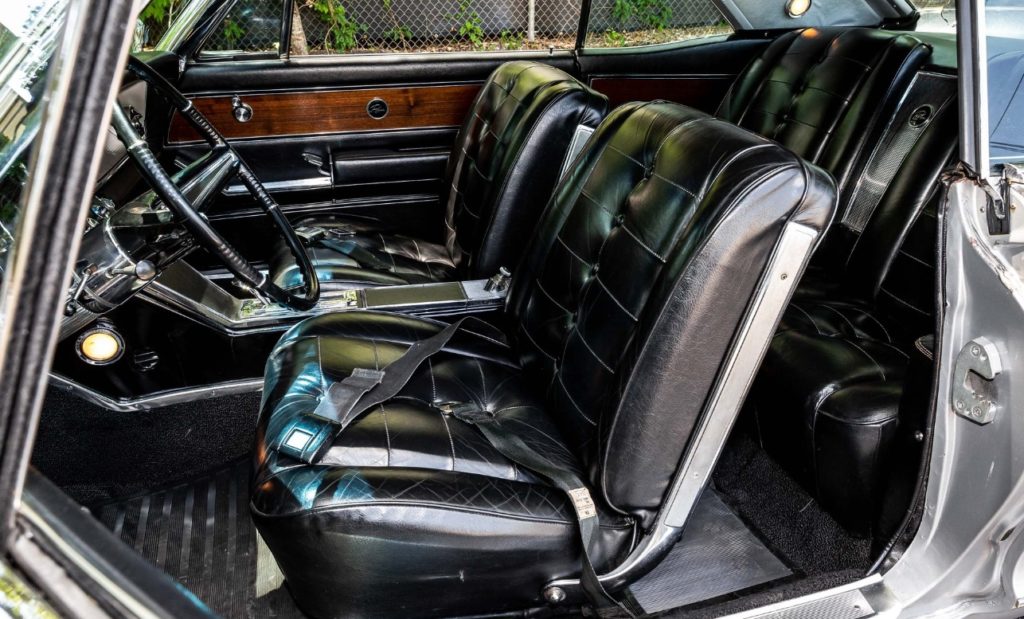
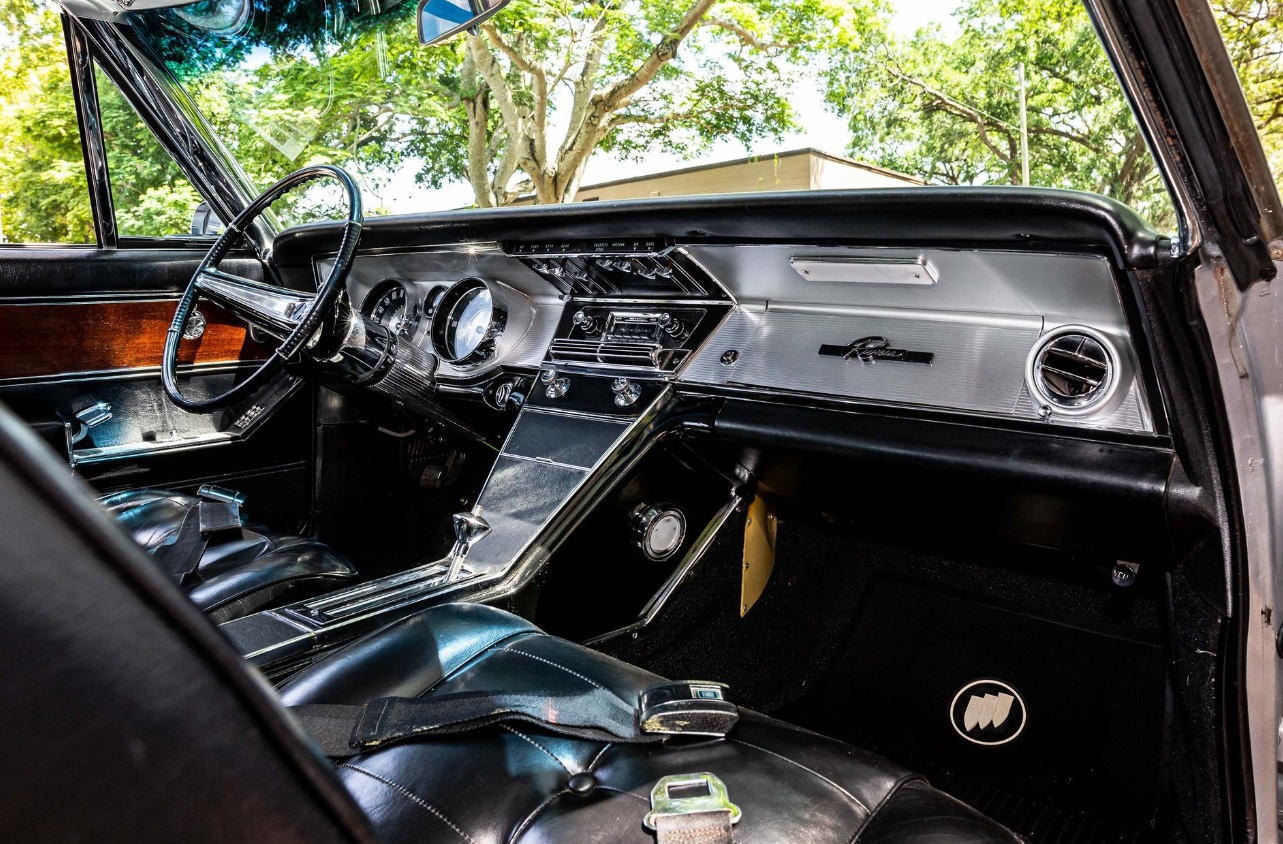
Image credits: orlandoclassiccars.net
In the original design, the front headlamps were to be retractable. Given the time needed for the arduous development of the cover system (including freezing prototypes in thick ice), the retractable units didn’t appear until the 1965 model, finally completing the intended overall design of the Riviera.
Chassis and Suspension
The 1963-1965 Buick Riviera was designed to provide a smooth, comfortable ride with predictable handling. The Riviera rode on a cruciform frame (not the standard Buick X frame), with a two-inch narrower track and a shorter 177-inch wheelbase.
The front suspension of the 1963-1965 Buick Riviera was a modified version of GM’s standard A-arm design. It featured upper and lower A-arms connected to the frame with rubber bushings. The front suspension featured coil springs mounted on the upper A-arms with a stabilizer bar.
The rear suspension was a four-link design with coil springs. The four-link design comprised two upper and two lower links attached to the frame and the rear axle. It was configured to provide a lower roll center than other Buick models. It was also equipped with a rear stabilizer bar, which, combined with the front bar, helped improve stability and reduce body roll in turns.
Engines and Transmissions
For 1963, the Riviera was offered only with a 401 CID Nailhead V8 engine with standard dual exhaust. It produced 325 horsepower and 445 lb-ft of torque. The 401 engine was coupled with a three-speed Twin Turbine Dynaflow automatic transmission and could reach 60 MPH in 8.5 seconds.

1963 Buick Riviera Engine Block – Image credit: barrett-jackson.com
In 1964 the new base engine was a high-performance 425 CID version of the Nailhead V8. The Wildcat 465 V8 produced 340 HP and 465 lb-ft torque.
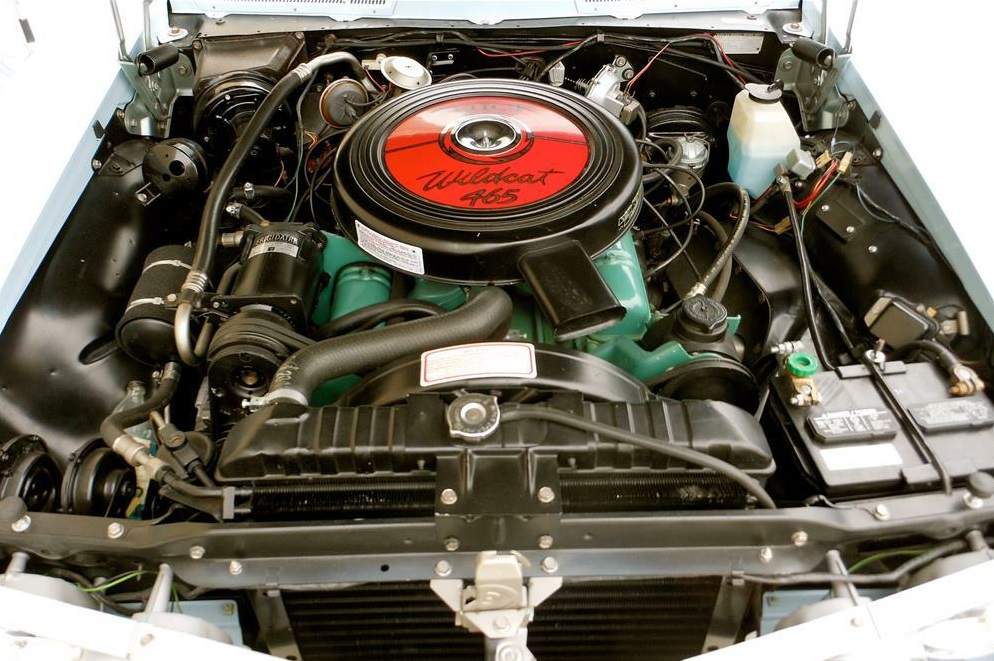
1964 Buick Riviera Engine Block – Image credit: barrett-jackson.com
And for an additional $139.75 tacked onto the invoice, owners could order a Riviera with the powerful Super Wildcat engine (RPO Y48). The Super Wildcat produced 360 HP. In 1964 only 2,122 Rivieras customers opted for the more potent power plant, which included dual carburetors with a special intake manifold.
In 1964, the older automatic transmission was replaced with the robust new GM Turbo Hydramatic THM400, which Buick promoted as the Super Turbine in its literature.
Then for 1965, the 401 CID Nailhead Wildcat 445 returned as the base engine, along with the two optional Wildcat 465 and Super Wildcat engine options.
1965 Buick Riviera Gran Sport

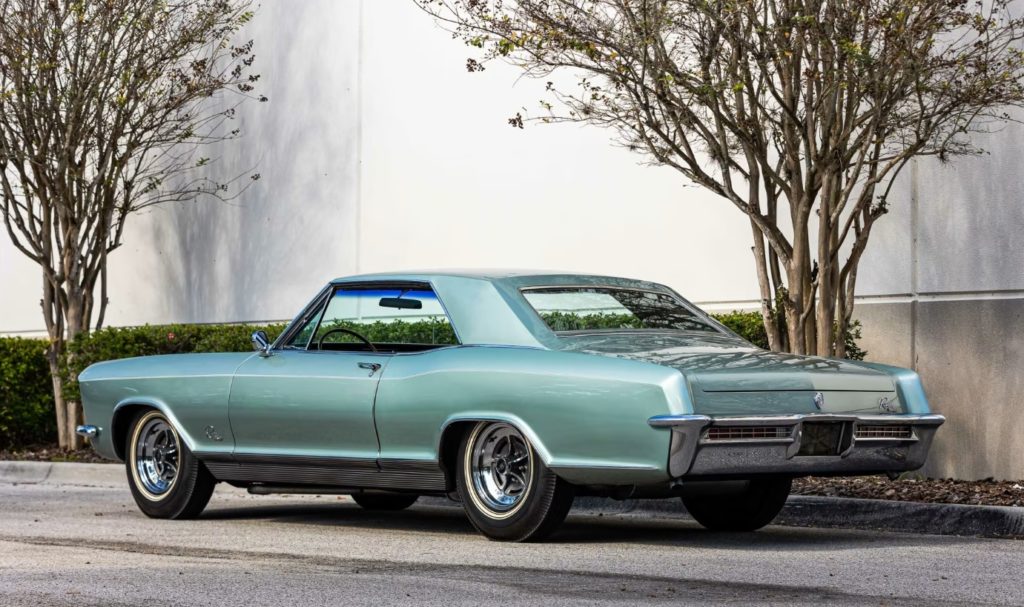
1965 Buick Riviera – Image credit: mecum.com
In 1965, Buick introduced a Gran Sport option across many of its models, including the Riviera. Less than 10% of the 34,586 1965 Rivieras were ordered with the Gran Sport package, although there are no identifiers in the VIN to set it apart. Upgrades that were part of the GS package included larger exhaust tubes and a limited-slip differential. The standard powerplant for the GS Rivieras was the Super Wildcat 425 engine.
While there were no suspension upgrades to the GS Riviera, Buick offered an optional ride and handling package composed of firmer springs and shocks, a faster 15:1 ratio steering box, and stiffer bushings for the track rod. The package lowered the ride height by one inch.
First-Generation Buick Riviera Suspension Upgrades

If you’re modifying a first-generation Buick Riviera, Aldan American has a coilover conversion kit. Our kits are 100% bolt-on, with no drilling or welding required for installation.
Check out this 1963-1965 Buick Riviera coilover conversion kit.
We manufacture Aldan American shocks from lightweight, high-strength 6061-T6 billet aluminum. We choose aluminum over steel for several reasons, including lightness and aluminum’s far better ability to shed the heat generated by the shock’s movements than steel.
Plus, every Aldan American shock, spring and bracket is precision manufactured here in the United States. And for long service life, Aldan Shocks are fully rebuildable and serviceable and are covered by our lifetime Forever Guarantee.
The available single-adjustable Road Comp front shocks allow you to tune your Riviera’s ride to your preferences, with six positions of compression dampening control. With threaded spring perches, the front ride height can be lowered by up to 2.0 inches.
For a complete installation, Aldan America offers separate single-adjustable rear shocks with 11 positions of rebound dampening that mount using your OEM hardware.
Upgrades for Your Riviera
Watch this step-by-step video guide for how to install our Road Comp coilover conversion kit on this 1965 Riviera.
And if you’re looking for more control over handling your Riviera, we also offer a Track Comp kit with double-adjustable front coilovers and double-adjustable rear shocks.
So, if you want to improve the ride and handling of your 1963-1965 Buick Riviera, Aldan American is your best choice for coilover suspension conversion kits.
About Aldan American
Established in 1981, Aldan American is the professional’s choice for high-quality performance suspension system upgrades and parts, including shock absorbers, coilovers, and suspension kits, designed for racing, street-performance, and vehicle-specific applications. Aldan American’s products are designed, tested, and made in the U.S.A. Aldan American is a team of automotive enthusiasts who specialize in high-performance coilover and suspension system upgrades. From the first-time builder to the professional racer, Aldan American is ready to help you achieve your suspension goals.
